TRANS CARIBBEAN AIRWAYS: THE BIRTH OF A NON-SKED
After World War II, hundreds of non-scheduled airlines, classified as large irregular carriers by the Civil Aeronautics Board (CAB), were created by entrepreneurs exploiting an ambiguity in CAB regulations. O. Roy Chalk (he never used his first name, Oscar) decided to try his hand at running an airline as well. On May 18, 1945, he incorporated Trans Caribbean Air Cargo Lines, with headquarters on New York’s West 44th Street.
Chalk acquired two relatively new C-47s (DC-3s) from the Reconstruction Finance Corporation (RFC). With this small fleet, Trans Caribbean took to the skies in December 1945.
AIR FREIGHT AT FIRST
While Chalk’s initial intent was to exploit the demand for air freight service between the US mainland and islands in the Caribbean, he soon saw the potential for low-fare passenger transportation in the same market. By the end of 1946, Trans Caribbean had added three DC-4s to its fleet, which were able to haul a growing number of travelers between New York and San Juan, in addition to cargo.

During 1946 alone, Chalk’s non-scheduled airline transported 4,248 passengers to and from Puerto Rico on 194 flights. The following year the number of customers in the same market more than doubled.
In October of 1946, the CAB sent a letter to Chalk and to the heads of five other non-scheduled airlines, warning them to refrain from conducting operations that resembled a scheduled service.

TRANS CARIBBEAN AIRWAYS SEEKS CERTIFICATION
Trans Caribbean applied for one of the CAB’s coveted certificates to officially become a scheduled airline. In January 1951, the Board selected Eastern Air Lines over Chalk’s company to compete with Pan American between New York and San Juan.
The decision was a disappointment to Chalk. It meant that Trans Caribbean (now calling itself Airways instead of Air Cargo Lines) would have to continue operating as a large irregular carrier – a non-sked – adapting to the CAB’s complex set of rules intended to thwart such companies from mimicking a regular scheduled operation.
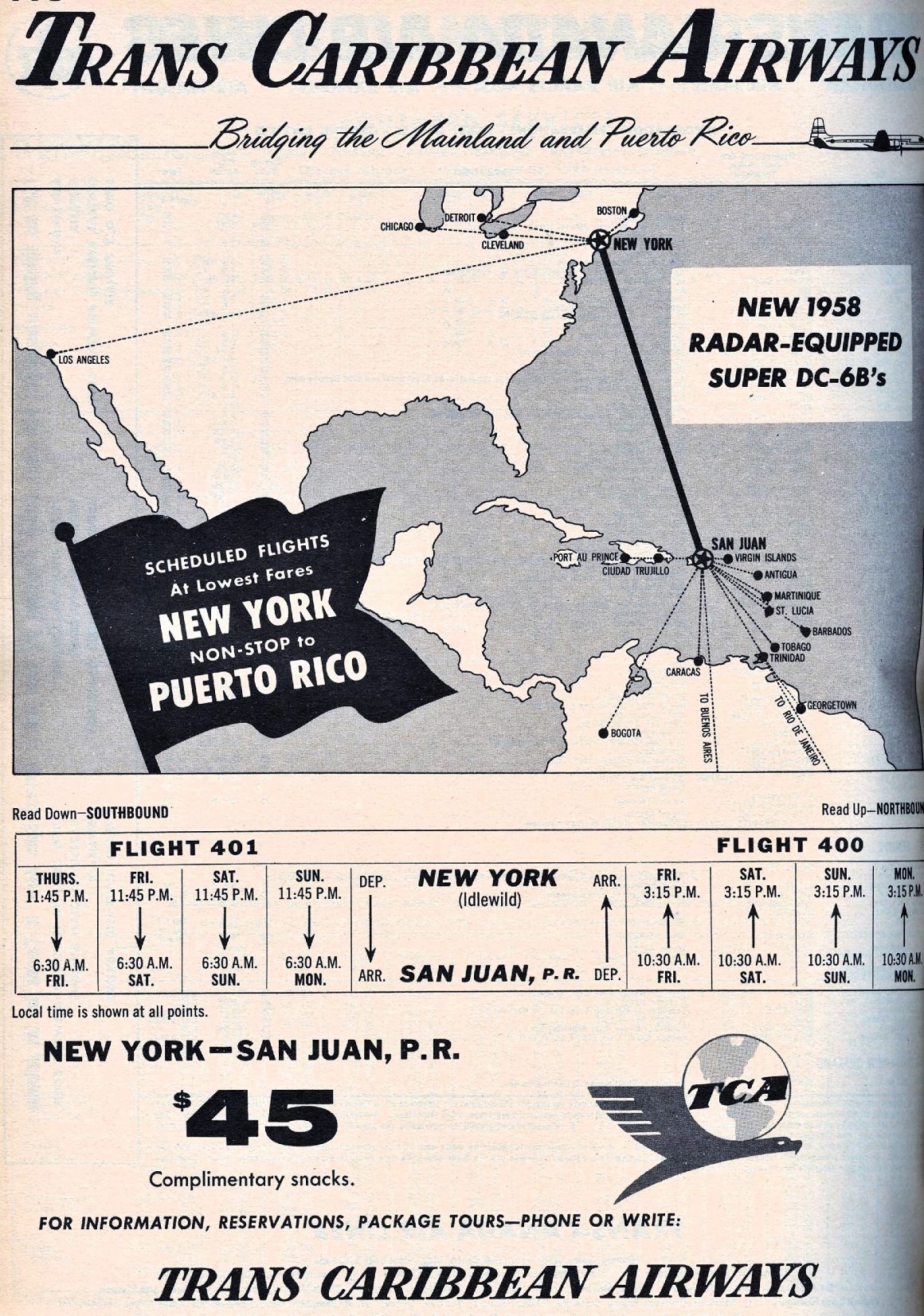
SECOND TIME AROUND
In 1955, the Civil Aeronautics Board replaced two of its five members and adopted a new attitude towards the non-skeds. The board reclassified this group of airlines, no longer labeling them simply as irregulars or non-skeds but now referring to them as America’s supplemental airlines
On September 12, 1957, the CAB finally awarded Trans Caribbean Airways (TCA) a Certificate of Public Convenience and Necessity to operate regular scheduled service between New York and San Juan, in competition with Pan American World Airways and Eastern Air Lines. Affectionately known as Trans Carib, the airline became the first of the supplemental carriers engaged in passenger transportation to receive such a certificate.
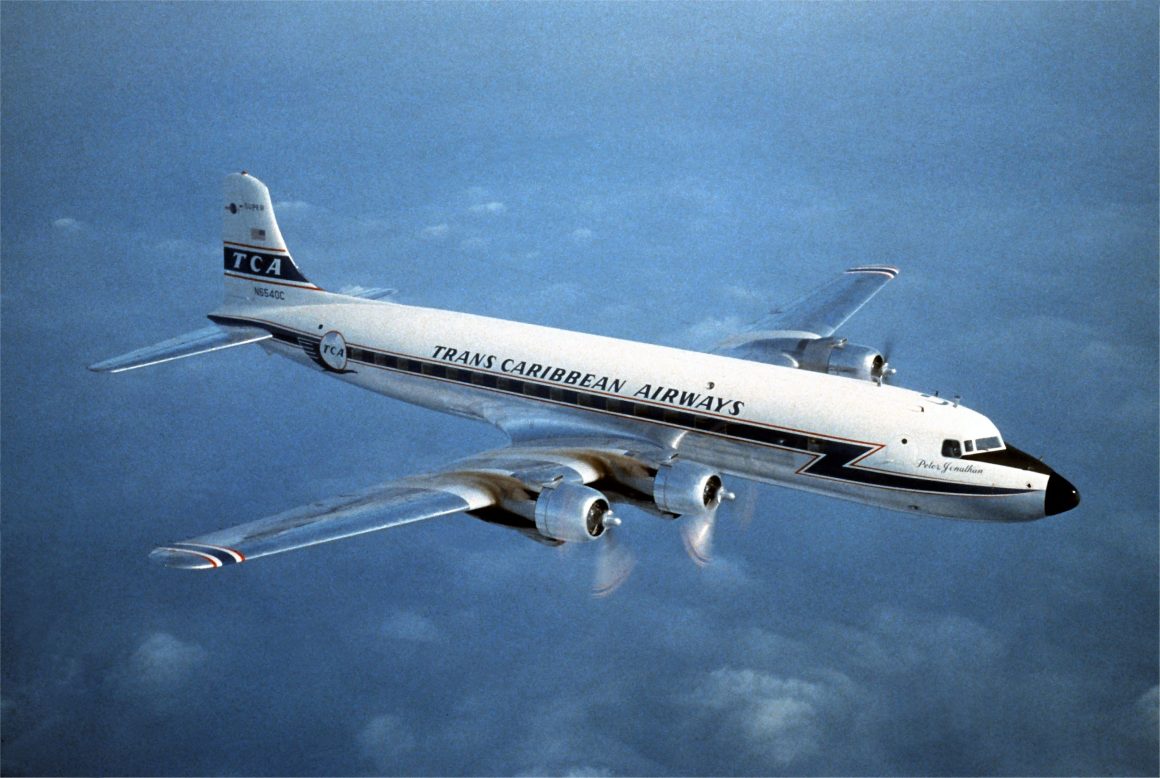
LOW FARES AND BIGGER PLANES
The CAB noted that “Puerto Rico is peculiarly dependent upon air transportation… From a passenger standpoint, Puerto Rico is almost wholly dependent upon air service…”. And Trans Carib’s focus on low-fare flights was just what the market needed. In 1958, the company was charging $45 one-way between New York and San Juan.

Chalk invested in larger, pressurized aircraft to supplement his unpressurized DC-4s. In 1955, he leased two DC-6s from PANAGRA (Pan American Grace Airways) and later purchased a DC-6A and a DC-6B from Canadian Pacific Airlines. He also acquired two factory-fresh models from Douglas Aircraft: a DC-6A and a DC-6B.
For cargo flights, two Curtiss C-46s remained in the TCA fleet.
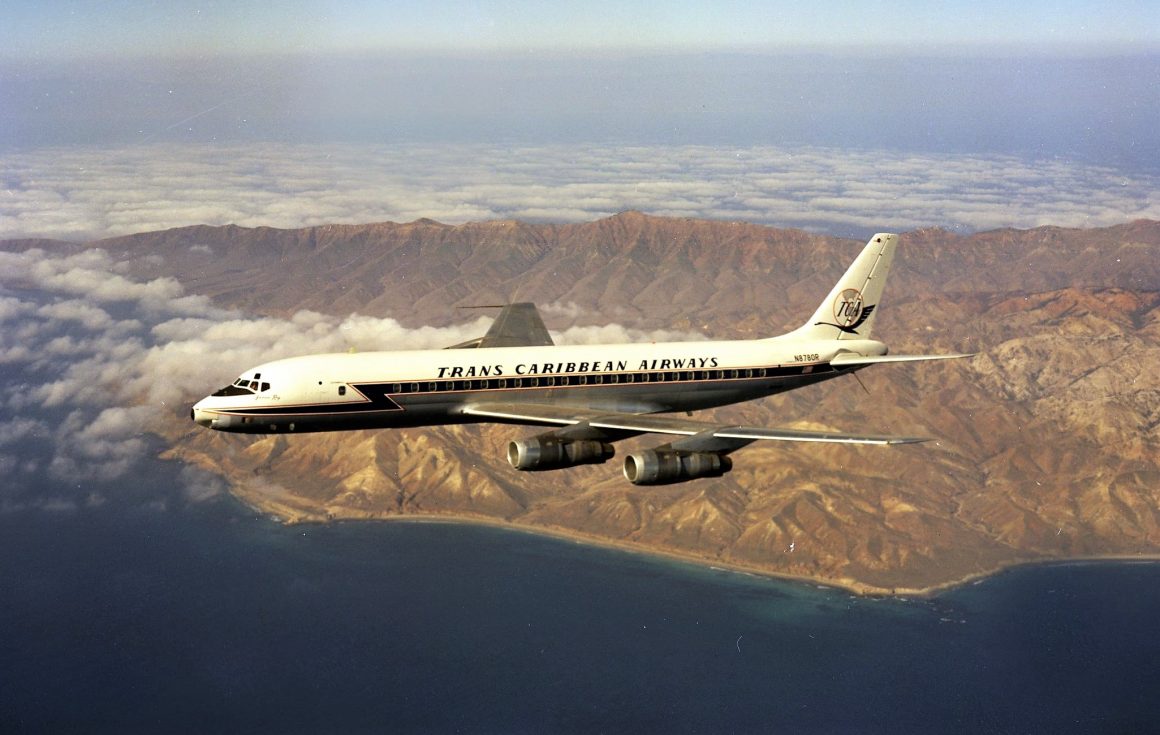
TRANS CARIBBEAN AIRWAYS INTO THE JET AGE
In 1960, Trans Caribbean secured the right to serve Aruba in the Dutch West Indies from San Juan.
In November 1961, TCA entered the jet age with arrival of the company’s first Douglas DC-8-51, followed by a second in the summer of 1962. These were joined by the first of several DC-8 Series 50 Fan Jets in 1963, which the airline advertised as airplanes so powerful that they might as well have a fifth engine!

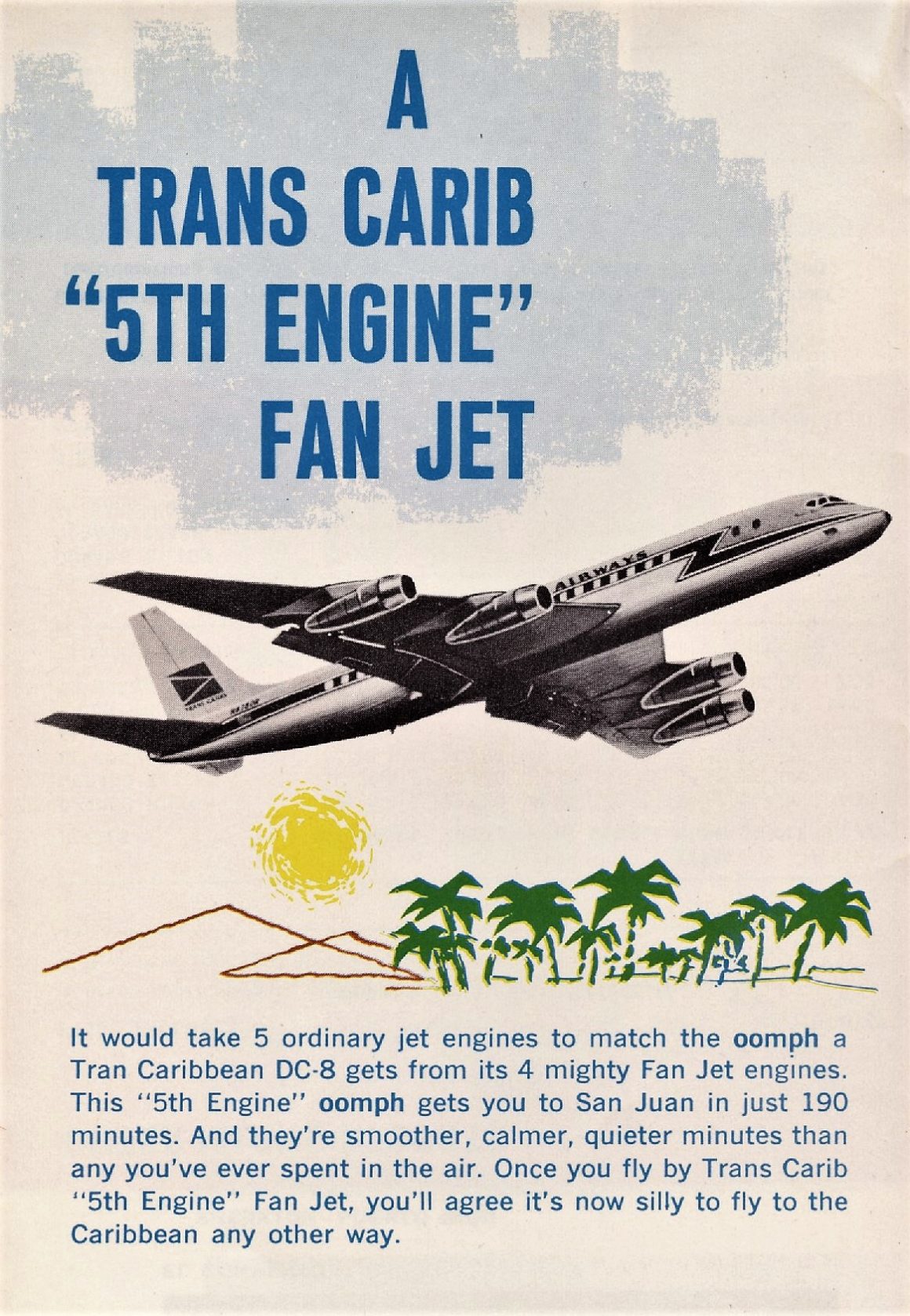
MORE JETS
In 1967, while awaiting delivery of its first Boeing 727, which would enter service the following year, Trans Carib leased a Boeing 707 and a 720 from Aer Lingus.


Three stretched DC-8-61s also joined the Trans Carib fleet during the winter of 1967-68. While the -61s would be the largest aircraft to serve in the carrier’s fleet, TCA signed a deal with Irish International Airlines (Aerlinte Eireann/Aer Lingus) to lease that company’s two soon-to-be-delivered Boeing 747s during the winter months for five years beginning in the early 1970s. But, as events unfolded, that arrangement was never acted upon.
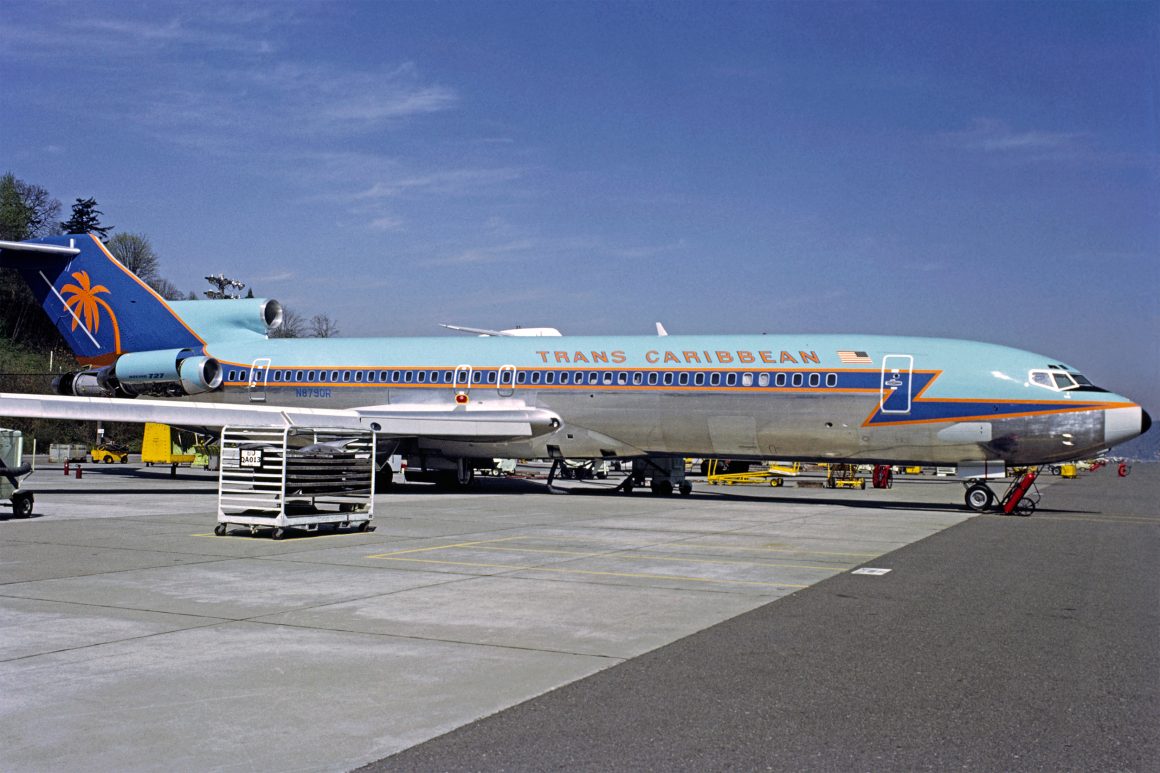
THE FINAL ROUTE AWARDS
In October 1967, service to Washington, DC (Dulles) was added and Trans Caribbean now transported passengers from both New York (JFK) and Washington to San Juan, and beyond San Juan to Aruba.
In 1969, Trans Caribbean received permission from the CAB to add St. Thomas and St. Croix in the US Virgin Islands to its route map. The airline also added Curacao, in the Dutch West Indies. This would be the airline’s final expansion.
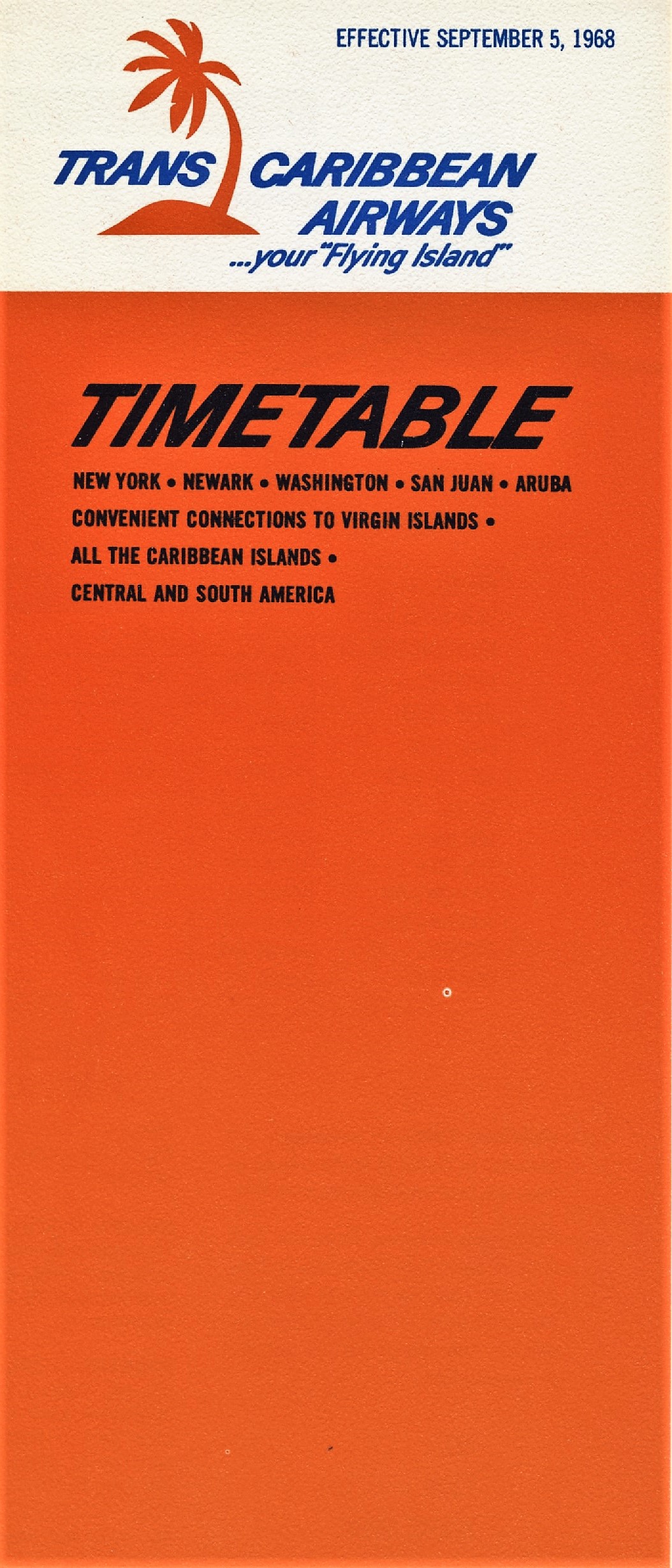
MERGER WITH AMERICAN
Although Trans Caribbean Airways had held its own through the early 1960s, competition from its much larger competitors, Pan American and Eastern, began to take its toll. With a fleet of just eight aircraft—five DC-8s and three 727s—the little airline could no longer compete profitably.
American Airlines wanted to strengthen its route system with more vacation destinations. TCA’s network would give the company a new foothold in the Caribbean. The CAB and the President of the United States approved a merger of the two carriers, and American Airlines absorbed Trans Caribbean Airways in March 1971.
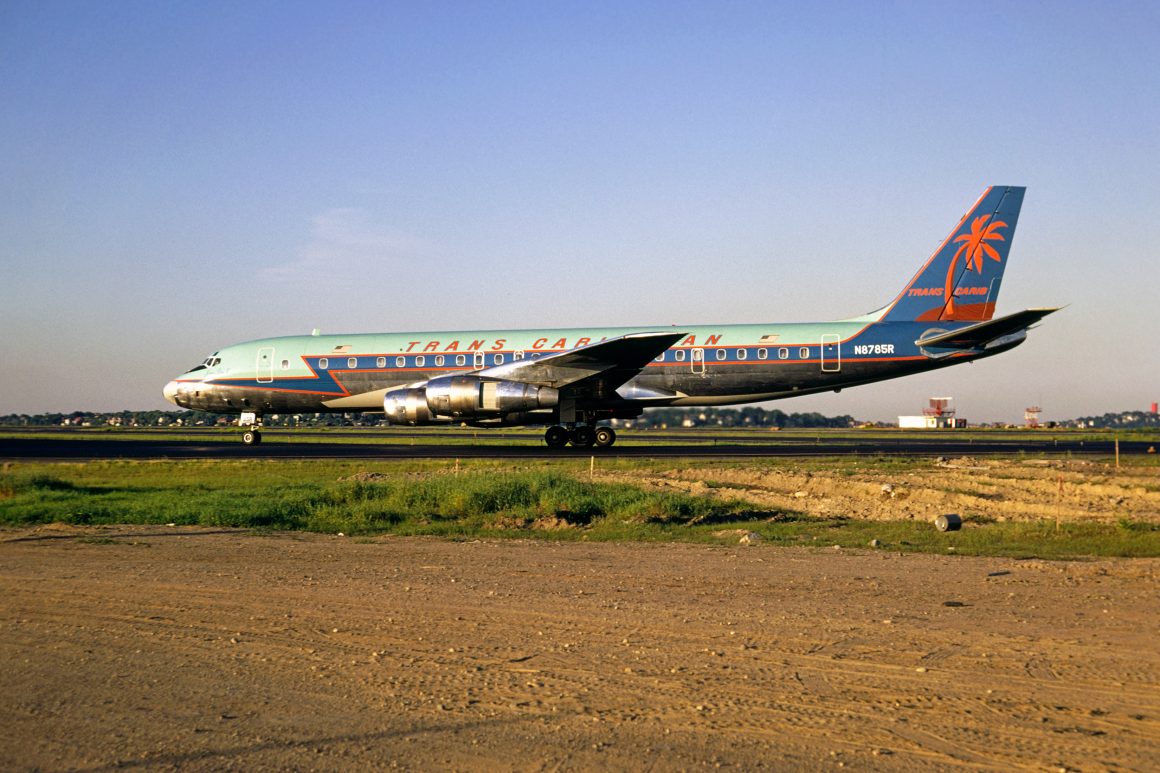
Within six months of the merger, American Airlines was the dominant carrier in the New York-San Juan market. In the years ahead, its operations in the Caribbean would grow exponentially.

But with the merger came the loss of a very colorful little airline that had advertised itself as ‘Your flying island’.

